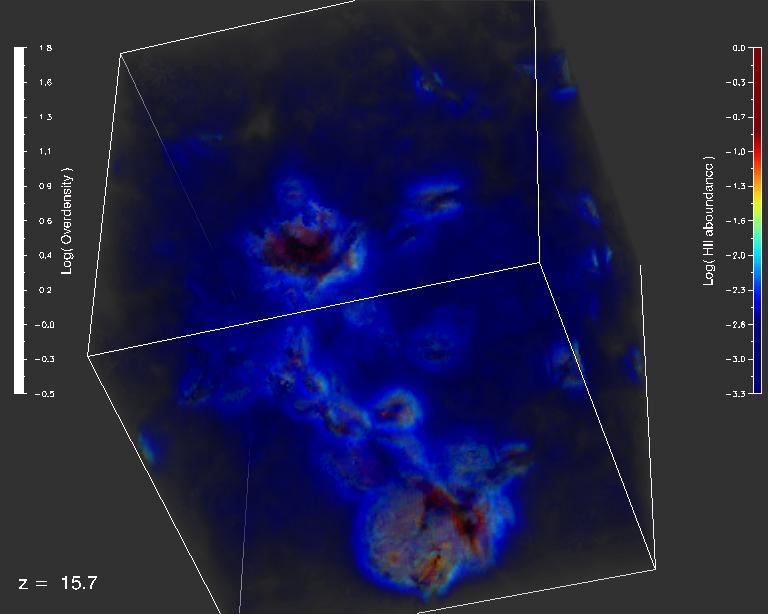
Papers (for professional astronomers)
The formation of the first generation of galaxies, Population III, marks the transition between the end of the "Dark Ages" and the beginning of the "Enlightenment" in the history of the Universe. In this epoch, the universe starts becoming complex and differentiate. The heavy-elements, from which planets and the life originates, are created for the first time.
The formation of the first stars in each Population III galaxy throughout the universe is interconnected. The fate of stars is determined by their own feedback which self-regulates galaxy formation on cosmological scales. When a galaxy produces too many stars it is condemned to die, but, from its ashes, a newborn galaxy is formed. The star formation in the early universe is dynamic, regulated, and equally distributed between each galaxy. The amount of ionizing photons produced by a galaxy cannot exceed a fixed limit. If that happens, star formation is suppressed in that region of the universe. Many galaxies are formed, and each one has similar luminosity. This mechanism prevents Population III galaxies from re-ionizing the universe. But many short bursts of star formation, produce the bulk of the mass in stars and heavy-elements in the universe even when normal galaxies start to be numerous (at redshift 10).

Papers (for professional astronomers)
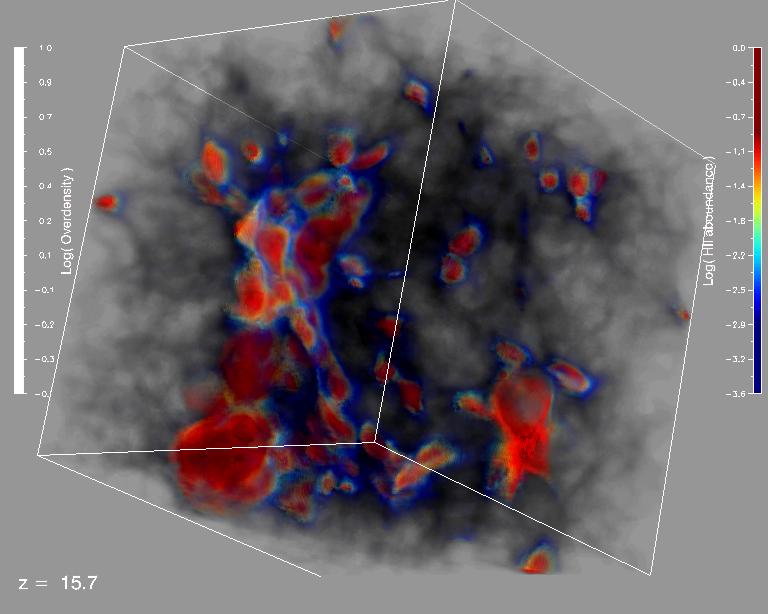 |
Evolution of the ionized gas fraction (HII regions)
The box rotates:Mpeg (1.9 Mb) or (0.5 Mb) The box is still: Mpeg (1.9 Mb) Figure explanation: In this cube, galaxies are formed inside the red regions. The radiation emitted by their stars ionize the surrounding gas (red color). The stars emit radiation in short bursts, therefore the gas continuously recombine and gets ionized again. This process confine the HII regions inside the dense filaments where galaxies form. |
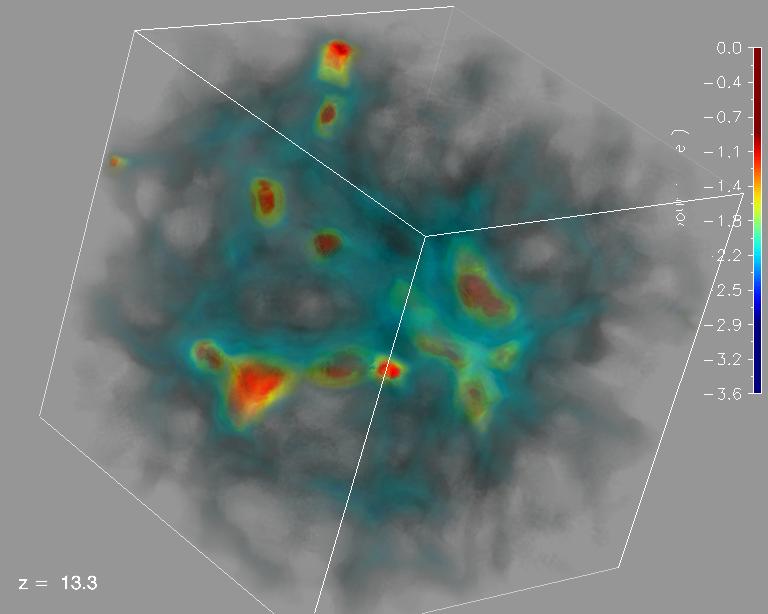 |
Evolution of the ionized gas fraction (HII regions) Mpeg
(1.4 Mb)
Figure explanation: In this cube, galaxies are formed inside the red regions. The radiation emitted by their stars ionize the surrounding gas (red color). The stars emit radiation in short bursts, therefore the gas continuously recombine and gets ionized again. This process confine the HII regions inside the dense filaments where galaxies form.
|
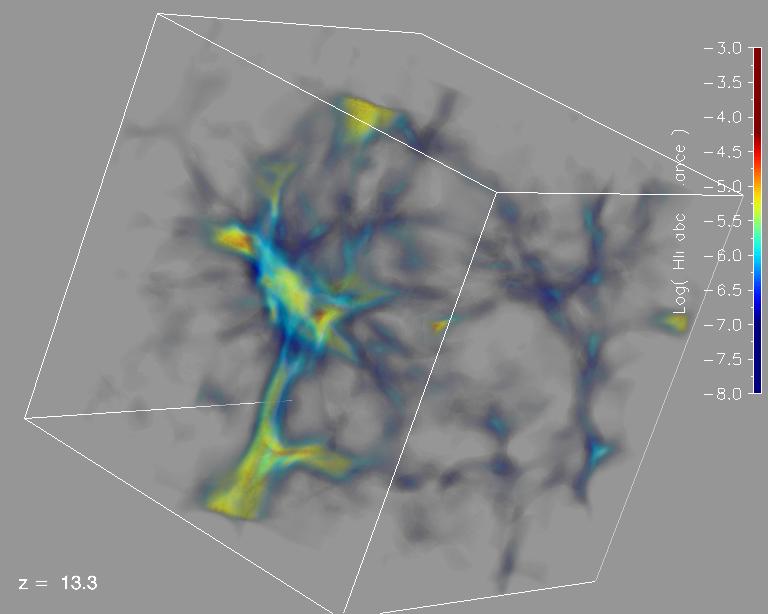 |
Evolution of the molecular hydrogen abundance Mpeg
(1.4 Mb)
Figure explanation: In this cube, galaxies are formed inside the dense filaments (yellow regions). The radiation emitted by their stars partially ionize the surrounding gas promoting the formation of molecules of hydrogen (H2). The stars emit radiation in short bursts, therefore the gas continuously recombine and gets ionized again. This process continuously produce new H2 inside the dense filaments where galaxies form. |
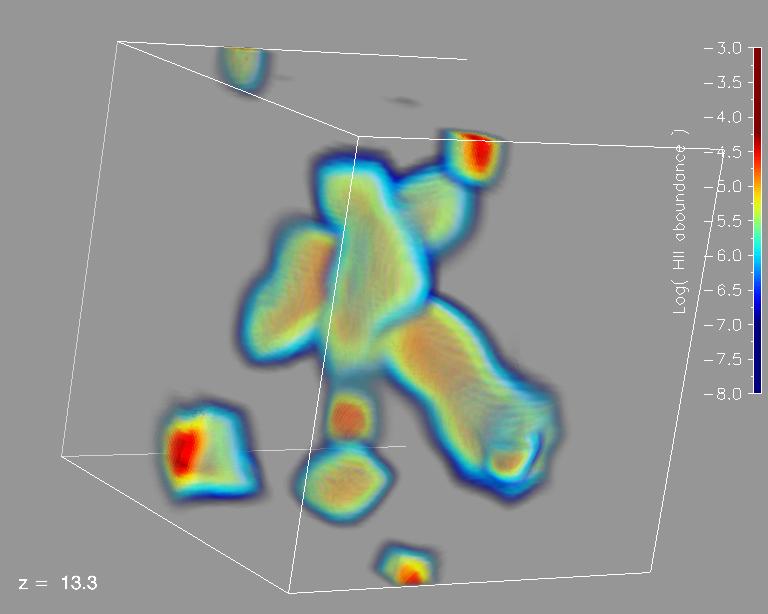 |
Heavy-elements Mpeg
(1.4 Mb)
Figure explanation: In this cube, galaxies are formed inside the dense filaments (red regions). The stars produce heavy-elements, that can be diffuse out of the galaxies (that are too small to be visible in this 3D rendering) by photoevaporation. |
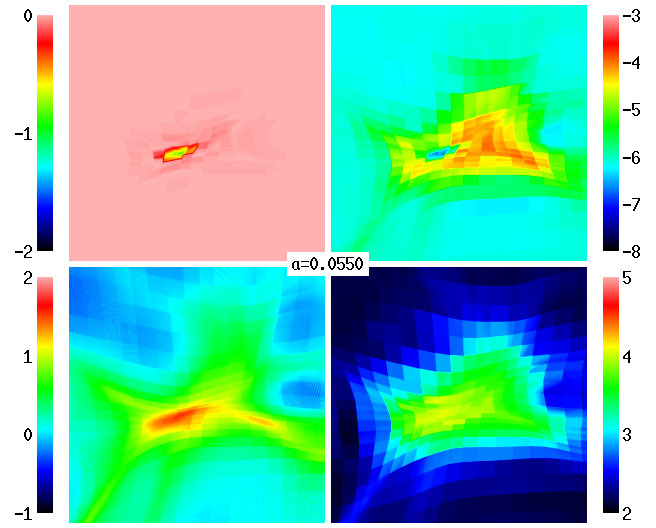 |
Zoom of a slice through the most massive galaxy in the simulation Mpeg
(5.5 Mb)or (0.5
Mb)
Figure explanation:
The bursting star formation if evident from the formation and recombination of HII regions (top-left panel). Molecular hydrogen is formed in front of HII regions and inside relic HII regions (top-righ panel) |
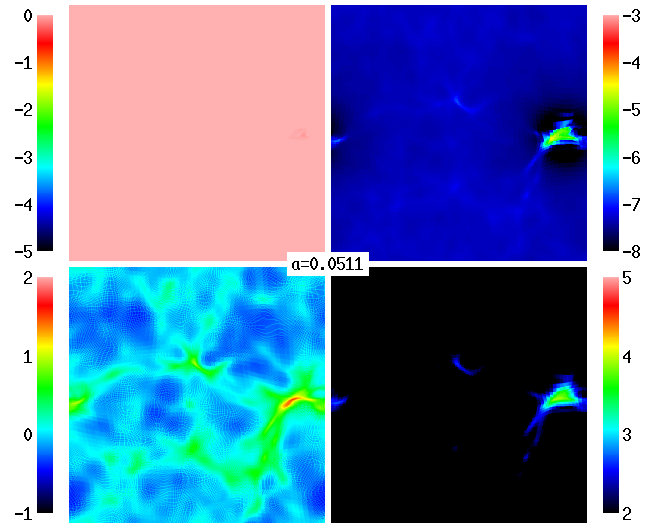 |
Slice through the most massive galaxy in the simulation Mpeg
(0.5 Mb)
Figure explanation:
In this simulation is visible the H2 dissociation sphere around a galaxy (top-right panel). The sphere disappears soon because the dissociating background becomes dominant in destroying H2 in the intergalactic medium. NB: this simulation differs from the preceding ones because the stars emit a different spectrum of radiation (Population II stars, with metallicity Z=0.04) |
As soon as I
graduate, I'll have more time to play around with 3D rendering